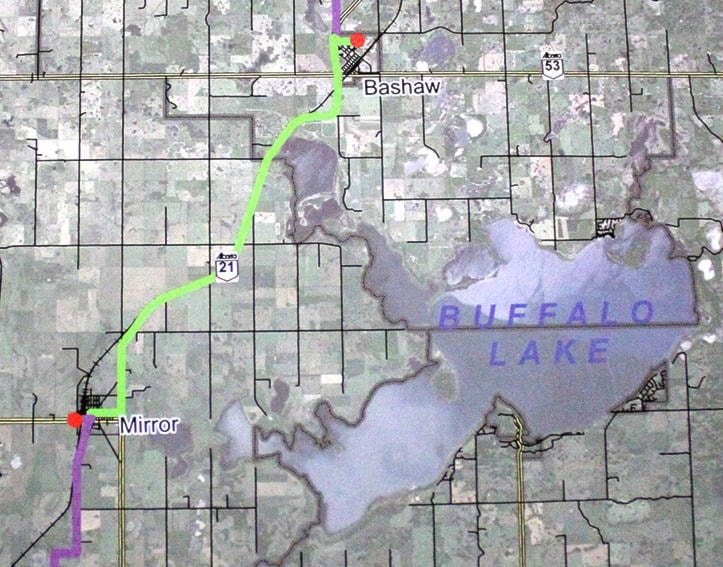This is a republished story from March 8, 2017
The conclusion can be reached that Bashaw’s water supply is plentiful and safe.
And that comes from a report done for the Highway 12/21 Regional Water Services Commission, although it also stated some work should be done to better distribute the water being produced.
The report was one of the pieces dug up in an investigation done by the Bashaw Star into how much water is available through the present well system in hopes of providing clarity on the issue.
Most of the information initially located was out of date by nearly a decade. However, further investigation did find data from two years ago.
Well testing
A copy of the minutes from the commission’s meeting from Aug. 28, 2015 was found to contain a pump test report from engineering firm Stantec, on work that was done on Bashaw’s three operating wells earlier that year.
According to the minutes, “The results of these tests are required to evaluate the ability of Bashaw’s wells to supply the current demands placed on them by both the Town and Commission for water supply.”
The minutes show water production on all three wells increased from levels recorded in 2008. The top producing well saw output of 1,047.1 cubic metres per day, up by more than 535 cubic metres. A cubic metre of water is equal to 1,000 litres.
A second well increased its output by over 332 cubic metres to 996.5 cubic metres per day, while the third well remained fairly static, seeing a small increase in output from 170.5 to 186.8 cubic metres.
The minutes stated, “The results showed that the expected 20-year yield from these wells is increased over the results from 2008. This should give reasonable assurance that these numbers can be produced from these wells.”
However, Stantec also pointed out that the Town of Bashaw explained there are pinch points in the system restricting its ability to supply more than 705 cubic meters per day.
As an estimate, Stantec used the figure of 400 litres daily per person to calculate how much water Bashaw would supply to the commission. That translates into 41,000 cubic metres and, as outlined in the report, Stantec stated the actual supply numbers from Bashaw appear to fall well short of that number at just 23,500 cubic metres.
The main reason for the shortfall appears to lie in the system’s restricted distribution network, something the report states may be mitigated by Bashaw through some cost efficient engineering. However, it’s unclear if there was ever a commitment by the town to do that work or if the cost of the work would be born solely by Bashaw.
Liquid response
Bashaw has been selling water to the commission, which is then sold and piped to Ferintosh, New Norway and Duhamel, and will continue do so until the town is hooked up. It’s estimated the town has been generating as much as $65,000 annually from water sales.
The regional water services commission operator, Lacombe County, along with Alberta Environment were contacted as part of the story. However, no one from Lacombe County responded to messages left or emails, while a representative from Alberta Environment replied with an email that pointed to information on a government website.
An adequate supply was one of the reasons why Bashaw initially joined the commission. However, since town council stated it will hook up to the regional water system when the line from Mirror to Bashaw is finished construction later this year, not much has been explained to residents except the financial cost of not doing so.
The government website the Star was sent — groundwater.alberta.ca — contained technical information on the water wells presently being operated by the Town of Bashaw. That data included measurements such as well depth, water discharge in imperial gallons per minute and quality testing information. Although, without some technical expertise to provide context to the information, there is no way to properly speak to what was found.
